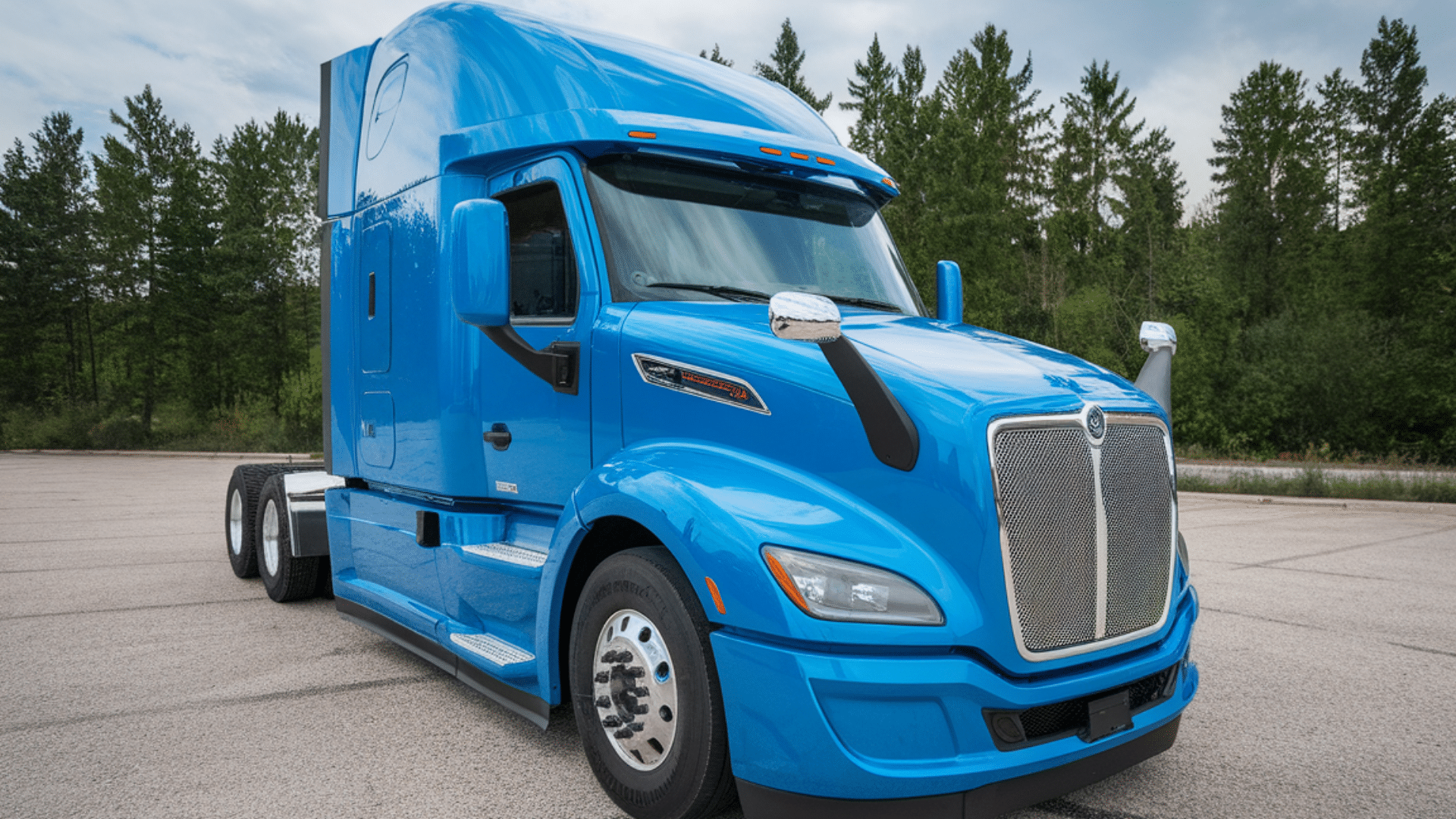When I first started learning about trucks, one of the questions I kept asking was, “How much does a semi truck weigh?” It’s something many people wonder about, and the answer isn’t as simple as one number.
Semi trucks can weigh very different amounts depending on whether they are empty, fully loaded, or pulling a certain type of trailer.
Knowing these weights is important for safety on the road, for drivers who need to follow the law, and even for anyone curious about how big these vehicles really are.’
In this guide, I’ll break down the average semi truck weight, what factors affect it, and why it matters more than most of us realize.
How Much Does a Semi Truck Weigh?

A semi truck’s weight can change a lot depending on how it’s used.
The truck itself, called the tractor, is usually pretty heavy even without a trailer. Once a trailer is attached, the weight goes up quickly, and adding cargo can make an even bigger difference.
In the United States, the most a semi truck and trailer can legally weigh together is 80,000 pounds. This limit helps keep roads safe and prevents too much damage to highways and bridges.
So when people ask about the average semi truck weight, it’s best to think of it as a range instead of just one number.
Average Semi Truck Weight: Empty vs. Fully Loaded
I always wondered why semi trucks seemed so heavy even when they weren’t hauling anything. The truth is, their weight changes a lot depending on whether they’re empty or fully loaded.
| Condition | Approximate Weight Range |
|---|---|
| Tractor only (empty) | 10,000 – 25,000 lbs |
| Trailer only (empty) | 9,000 – 14,000 lbs |
| Tractor + Trailer empty | 20,000 – 35,000 lbs |
| Fully loaded (max legal) | Up to 80,000 lbs |
This simple breakdown shows just how much weight can shift depending on the setup. It’s easy to see why weight rules and limits matter so much.
Factors That Influence Semi Truck Weight

Several things can change how heavy a semi truck is, from its build to what it’s carrying. Knowing these factors makes it easier to understand why weights vary so much.
1. Truck Type
The design of the truck itself plays a big role in how much it weighs. A day cab, which doesn’t have a sleeper section, is usually lighter and often used for shorter hauls.
A sleeper cab, on the other hand, has a built-in resting area, adding several thousand pounds to the total weight.
Bigger engines, heavy-duty parts, and added features can also make one truck heavier than another, even before a trailer is attached.
2. Trailer Style
Different trailers come with different weight ranges. A flatbed trailer is one of the lighter options, often weighing around 10,000 pounds.
A dry van trailer adds more weight, while a refrigerated trailer can weigh 12,000–15,000 pounds because of its cooling system.
Each style is built for a specific type of cargo, and that design affects the overall semi truck weight.
3. Cargo Load
The type of freight being carried is often the biggest factor. Lightweight items like paper or packaged foods add less to the truck’s total weight
Heavy items such as construction equipment, steel, or large machinery can push the truck much closer to the 80,000-pound legal limit.
In many cases, cargo alone can account for 20,000 to 45,000 pounds, depending on what’s being shipped.
4. Fuel and Equipment
A semi truck’s fuel tank alone can hold 100–300 gallons, and a full tank can add 700–2,100 pounds to the weight. Extra equipment like toolboxes, safety gear, or add-ons for specific industries can also add a lot.
Even details like larger tires or extra batteries for refrigerated loads can push the weight up. These smaller factors add up quickly and make a big difference on the road.
5. Axle Setup
The number of axles under a truck helps decide not just how much weight it can carry, but how that weight is spread out.
A single axle has a limit of 20,000 pounds, while tandem axles can hold up to 34,000 pounds. Trucks with more axles are built for heavier loads and may require special permits.
This setup helps balance safety and keeps the vehicle stable while hauling.
Legal Limits & Regulatory Framework for Semi Truck Weight
Semi trucks can only carry so much, and the rules are designed to keep roads safe and prevent damage. These limits also make sure trucks are stable and easier to control.
- Gross weight limit – 80,000 pounds total for truck, trailer, and cargo
- Single axle limit – Up to 20,000 pounds
- Tandem axle limit – Up to 34,000 pounds
- Bridge Formula – Ensures weight is spread across axles and distance
- Permits – Needed for loads above the legal maximum
These regulations create a balance between moving goods efficiently and protecting public safety.
Semi Truck Weight in Different Units (Tons & Kilograms)
It’s easier to picture just how heavy a semi truck is when the weight is shown in different units. Converting pounds into tons or kilograms gives a clearer idea of the scale.
| Condition | Pounds | Tons | Kilograms |
|---|---|---|---|
| Tractor only (no trailer) | 10,000 – 25,000 lbs | 5 – 12 tons | 4,500 – 11,000 kg |
| Empty tractor + trailer | 20,000 – 35,000 lbs | 10 – 17 tons | 9,000 – 16,000 kg |
| Fully loaded semi truck | Up to 80,000 lbs | 40 tons | ~36,000 kg |
These conversions show just how massive semi trucks are compared to regular vehicles.
Why Knowing Semi Truck Weight Matters
Semi truck weight affects safety, efficiency, and the condition of our roads. It’s a key part of driving and transporting goods responsibly.
- Driving control – Heavier trucks handle differently and need more care on the road
- Braking distance – A fully loaded semi takes much longer to stop than a car
- Road protection – Extra weight can damage roads and bridges over time
- Legal rules – Staying within limits helps avoid fines and keeps loads safe
- Fuel use – Companies plan loads based on weight to save fuel and money
I see semi truck weight as more than numbers – it’s a way to keep travel safer and hauling more dependable.
Conclusion
When it comes to semi truck weight, there isn’t one answer that fits every situation. The numbers change with the truck type, trailer style, cargo, and even fuel levels.
A fully loaded semi can weigh up to 80,000 pounds, which makes it one of the heaviest vehicles on the road.
If you’ve ever wondered, “How much does a semi truck weigh?” It’s best to think in ranges instead of one fixed number. I’ve found that knowing these details isn’t just about curiosity, it’s about safety, logistics, and smart planning.
For more straightforward guides on shipping, transport, and logistics, read my other blogs to find advice you can put into action right away.















